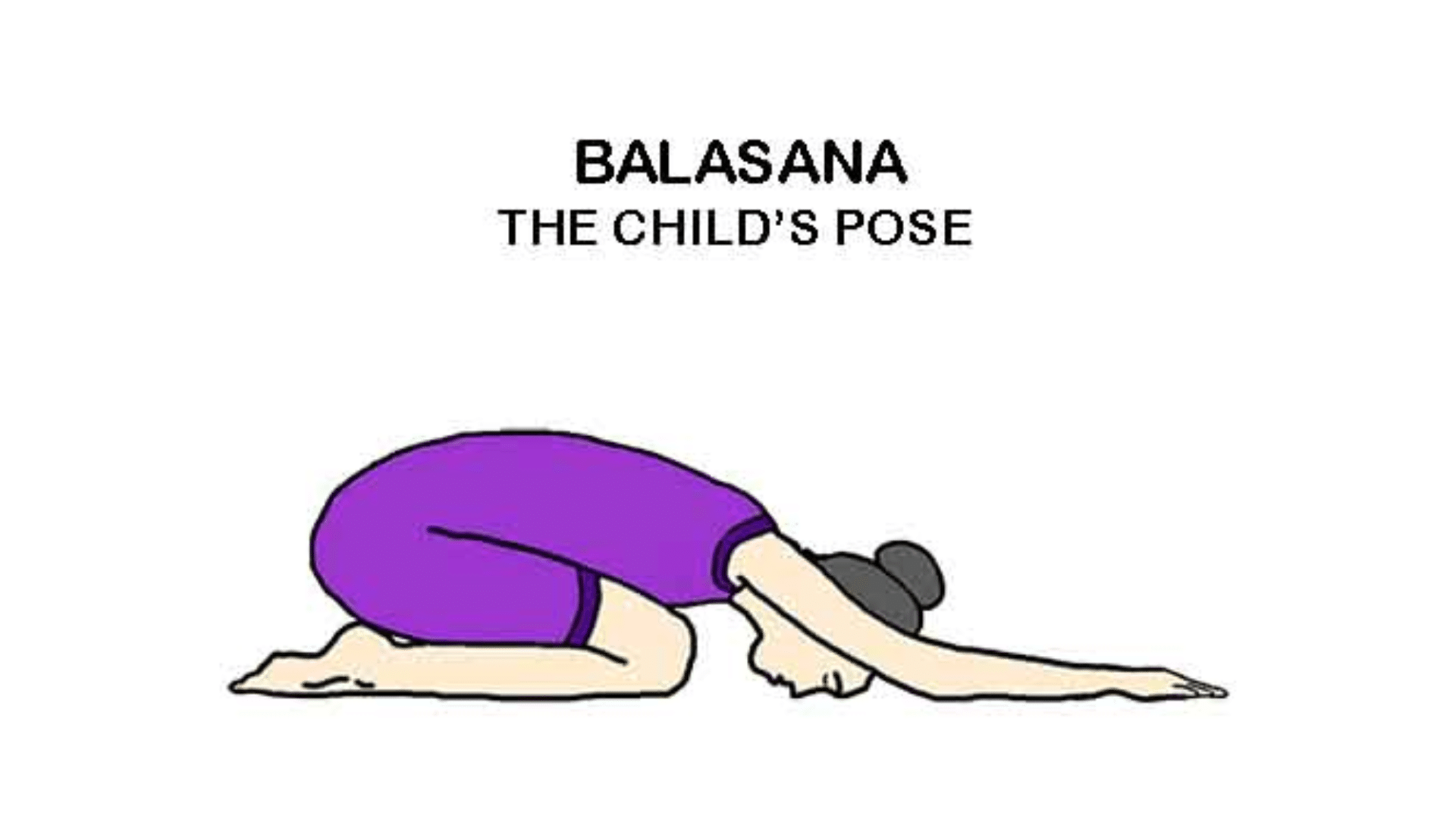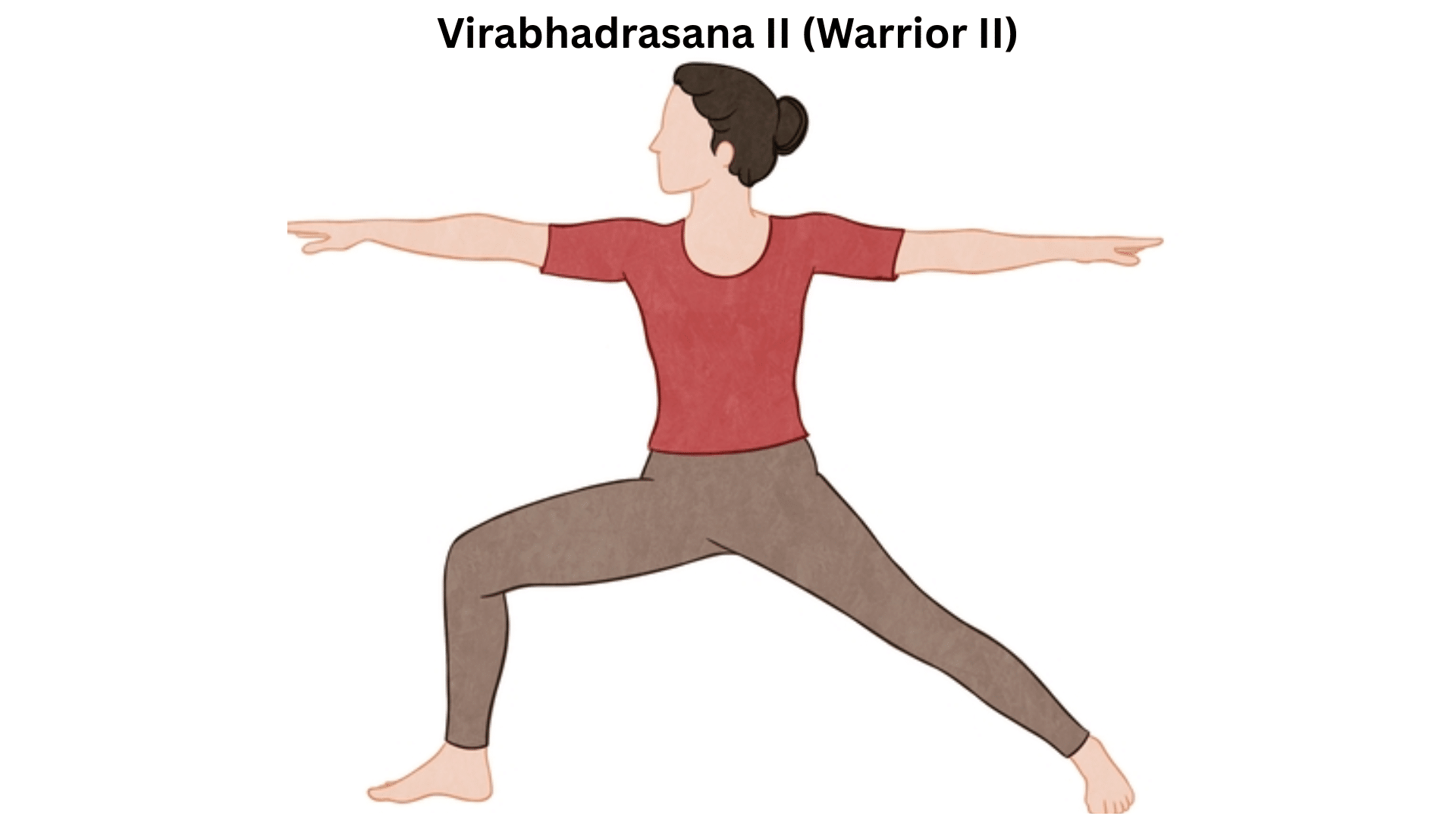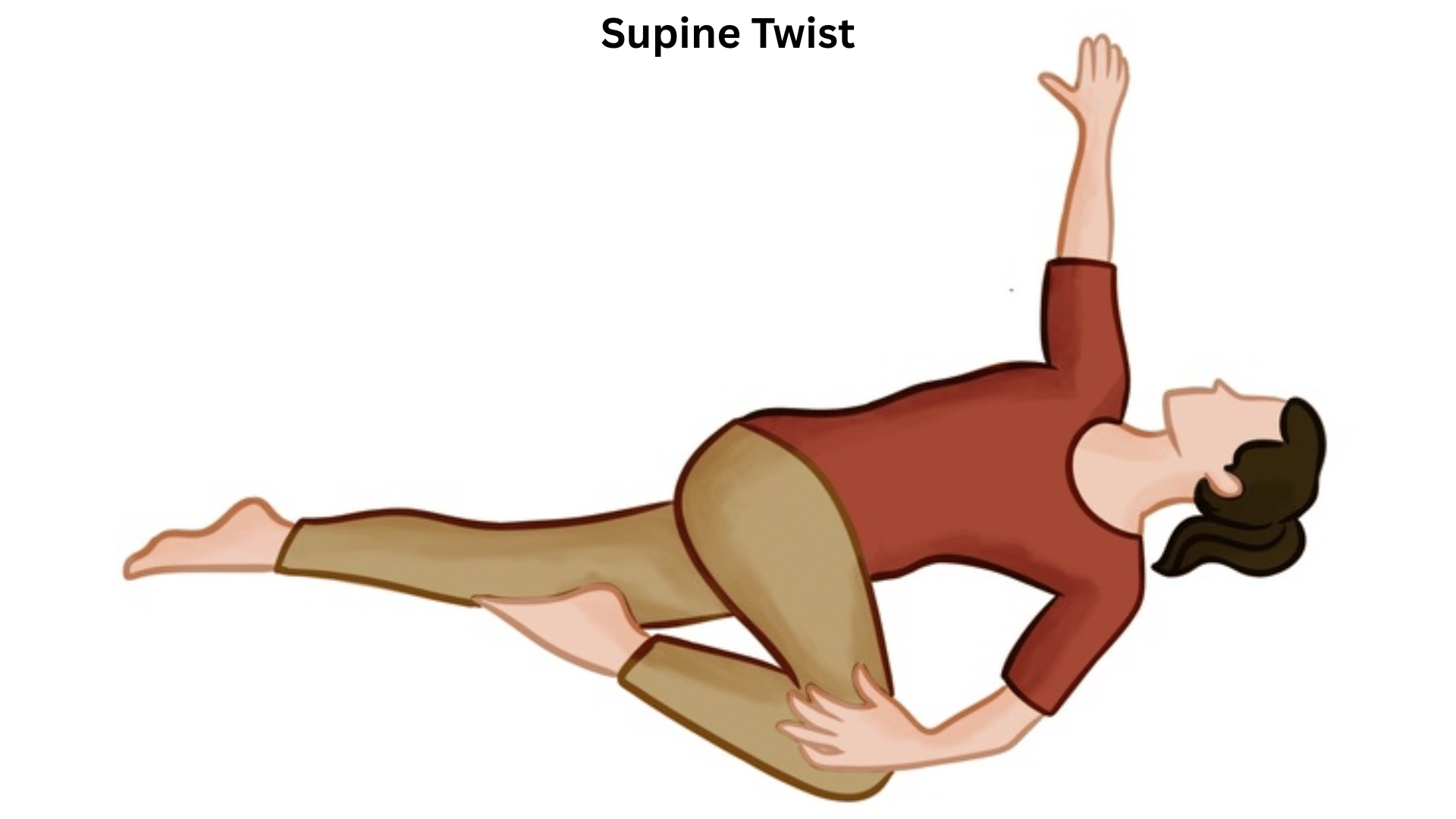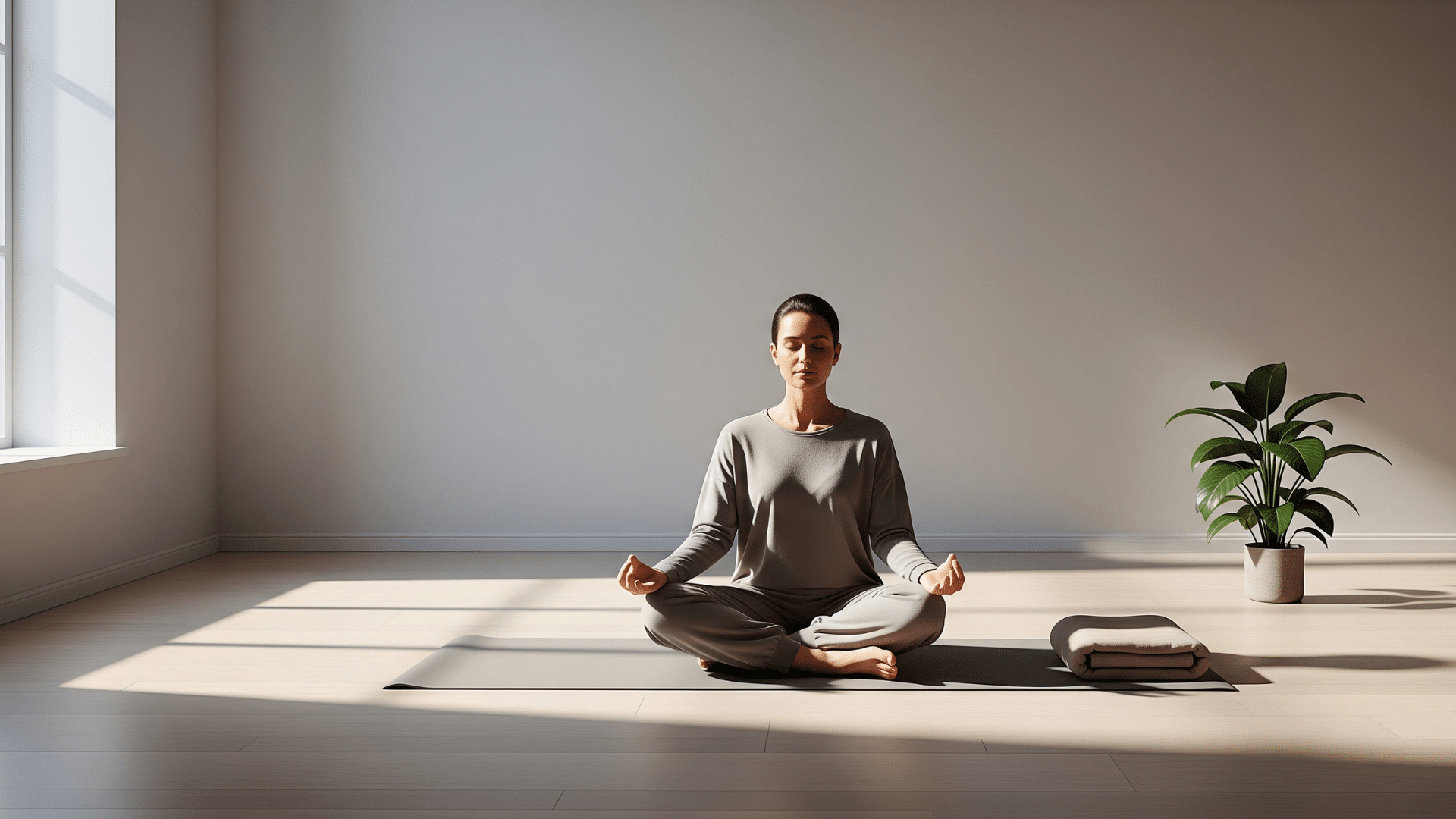Some days, it feels like you’re carrying more than you can handle: stuff, stress, and expectations. That weight builds quietly. You start to crave ease, space, and something lighter.
The aparigraha meaning reaches right into that moment, offering a quiet way out. Letting go doesn’t mean losing, it means loosening your grip on what’s been holding you back.
As you read, you’ll find calm, useful ways to apply this practice in daily life. If lighter sounds better than more, keep going.
What is Aparigraha?
Aparigraha comes from the Sanskrit words a (not), pari (around), and graha (to seize), meaning “not taking more than needed.”
It’s often translated as non-attachment, non-possessiveness, or non-greed. Many also refer to this as non-attachment yoga, a practice that shifts focus from external gain to inner peace
In yogic philosophy, Aparigraha is the fifth Yama in Patanjali’s Eight Limbs of Yoga, a key part of ethical living. According to Yoga Sutra II.39, practicing non-possessiveness brings insight into one’s purpose and even past lives.
At its core, Aparigraha teaches you to release your grip on things, people, or outcomes so you can find clarity, peace, and the space to live with intention rather than accumulation.
Historical and Philosophical Roots
Aparigraha has deep roots in Indian thought, where grasping is seen as a cause of suffering and letting go as a path to freedom.
It is the final Yama in Patanjali’s Eight Limbs, forming a moral base for practices such as asana and meditation.
Beyond yoga, Aparigraha is embraced in Jainism and Buddhism as a vow to renounce excess and ego. While it once reflected strict renunciation, its meaning has expanded.
Today, it encourages a shift toward mindful living, choosing simplicity over excess, presence over craving, and understanding over accumulation in both material and emotional life.
The 7-Day Aparigraha Challenge


Use this simple, practical challenge to help you let go of what you don’t need, physically and emotionally.
Day 1: Declutter a Drawer
Choose one drawer and clear it out completely. Let go of anything that hasn’t been used in a year. As items are removed, take a moment to notice how much lighter the space feels.
This isn’t just about tidying, it’s about creating room to breathe. Even small belongings can carry emotional weight. Clearing one drawer becomes the first step in letting go of what no longer supports inner peace.
Day 2: Digital Detox
Go through the phone and delete unused apps, old screenshots, or photos that no longer hold meaning. This exercise is about more than saving storage; it’s about protecting attention.
Every app, notification, and image takes up mental space. Clearing them creates room for clarity and ease, both online and off. Reducing digital clutter supports a calmer, more focused mind.
Day 3: Spend Nothing
Take a break from buying for one whole day. Skip the snacks, online browsing, and spontaneous purchases. Instead, pause and notice every urge to spend.
What emotion is behind it, boredom, anxiety, restlessness? Use this time to explore what triggers the desire for more. By spending nothing, it becomes easier to see what truly matters and what’s simply filling space.
Day 4: Gift Something Meaningful
Find one item that no longer serves a purpose and offer it to someone who will appreciate it. Whether it’s a book, a candle, or a keepsake, giving it away becomes a gentle lesson in non-attachment.
Letting go in this way doesn’t mean losing something valuable; it means creating joy for someone else while freeing emotional and physical space.
Day 5: Release a Grudge
Think of someone who caused hurt or frustration. Write a letter expressing the thoughts or emotions that still linger, but don’t send it.
Tear it up, burn it safely, or simply toss it away. This act helps move energy that’s been stuck. Letting go of resentment can lighten the heart and open space for peace.
Day 6: Unfollow for Your Peace
Review social media and remove accounts that trigger comparison, frustration, or mental clutter. The digital world doesn’t need to be a constant source of stress.
Protect attention like it matters, because it does. Follow only what supports peace, growth, and genuine joy. Releasing online noise allows room for meaningful connection and quiet reflection.
Day 7: Sit in Silence and Journal
Find a quiet spot, sit for 10–15 minutes, and simply breathe. Let thoughts rise and fall without judgment. Afterward, write freely in a journal.
Ask this: What am I still holding onto that I don’t need? Trust whatever comes up. Silence invites truth, and truth often reveals what’s ready to be released. This space becomes the ground for clarity.
How You Can Practice Aparigraha on the Yoga Mat
Use your time on the mat to release expectations, listen to your body, and let go of control.
Asanas That Embody Letting Go
When you move through your practice, you can use each pose to help yourself let go and reconnect with what you truly need.
1. Balasana (Child’s Pose): Surrender and Simplicity


Start by lowering yourself into Child’s Pose. Let your forehead rest on the mat and your arms stretch forward or alongside your body. Breathe slowly and allow your weight to settle.
You’re not chasing a shape here; you’re simply pausing. This pose invites you to stop striving and just be.
Feel the support beneath you and notice how surrender brings ease. Use this moment to let go of tension and control.
2. Virabhadrasana II (Warrior II): Calm Strength Without Grasping


Stand firm in Warrior II, but don’t push past your limits. Stretch your arms, stay grounded through your feet, and soften your gaze. Feel steady, but not forceful.
This isn’t about how deep your lunge is; it’s about showing up with presence. Let go of needing to perfect the pose.
Focus on your breath and your connection to the moment. You’re building inner steadiness without trying to hold or prove anything.
3. Supine Twist: Releasing Tension Through Openness


Lie on your back, hug your knees in, and drop them gently to one side. Extend the opposite arm and turn your head the other way. This twist helps release tension in your spine, but it’s also a place to unwind mentally.
Let gravity do the work, don’t force the shape. Breathe into your side body and allow the twist to unfold naturally. You’re learning how to open without grasping.
Emotional Application in Practice
Your mat is more than a workout space; it’s a mirror. Use it to notice when you start judging your flexibility or chasing the “perfect” pose. Let go of that need.
If you fall, it’s part of the process. Transitions, mistakes, and off days are all welcome here.
Try to stay with what’s real, not what’s ideal. Like B.K.S. Iyengar said, “Yoga teaches us to cure what need not be endured.” Let that guide you.
How You Fit Aparigraha Into the Eight-Limb Yogic Path
You start your yogic path by learning to let go. Aparigraha helps you build focus, peace, and inner freedom.
Relation to Other Yamas and Niyamas
Aparigraha works best when you combine it with other yogic values. Together, they shape how you think, act, and live.
| Concept | Translation | Connection to Aparigraha |
|---|---|---|
| Asteya | Non-stealing | Avoid taking more than you truly need |
| Santosha | Contentment | Non-attachment leads to peace with what is |
| Ishvarapranidhana | Surrender | Let go of control; trust a higher purpose |
These ideas help you stay grounded, balanced, and focused as you move deeper into your yoga practice and daily life.
Position in the Eight Limbs
Aparigraha begins your path in yoga. It helps you let go early, making space for deeper focus and spiritual growth.
- It belongs to the first limb, Yamas, which are ethical guidelines for how you relate to the world.
- Letting go supports every limb that follows, from posture to breath to meditation.
- Without release, there’s no real depth. Aparigraha clears the way for clarity and stillness.
- Each step builds on this base, making non-attachment essential for actual inner progress.
Modern-Day Aparigraha Applications
You can live with less and feel more grounded. Aparigraha applies to daily choices, not just ancient spiritual practice.
- Consumer Habits: Practice “enoughness” by buying only what you need and letting go of constant craving for more.
- Relationships: Release the need to control others, drop jealousy, and build healthier connections based on trust and respect.
- Emotional Attachments: Notice where you cling for identity or validation, and gently loosen those inner ties.
- Sustainability & Ethics: Owning less reduces waste and stress, and living simply supports both the planet and your peace of mind.
Conclusion
If you’ve been clinging to things, habits, or even people, I get it; I’ve been there, too. The truth is, aparigraha can help you loosen your grip without losing yourself.
Letting go, little by little, creates space for peace, clarity, and freedom. If you start with your phone, your thoughts, or your yoga mat, one slight shift is enough to begin.
Try just one practice today, see what it changes. Keep what serves you, and gently release what doesn’t. You don’t have to do it all at once. Just keep going, one step at a time.
Want more guidance like this? Check out my other posts on the Yamas and bring even more balance into your life.










